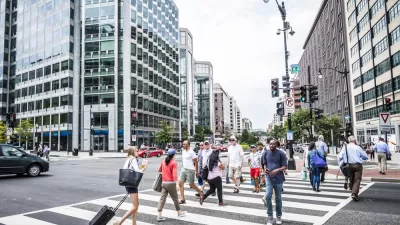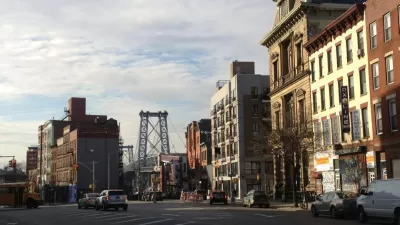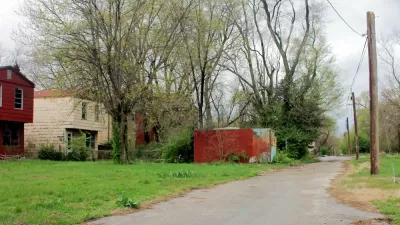Joseph Berger describes a demographic transformation underway on the Bronx's Grand Concourse.
2010 was the first census year in nearly half a century that New York's South Bronx saw an increase in its white population, "ever since an exodus that cost the Bronx over 300,000 residents and turned the Concourse [neighborhood] into an emblem of white flight and urban disenchantment," Berger writes.
The increase was small in number (less than 500 new residents in ten years) but dramatic in scale (up 17.5%), and represents a shift that is reflected in the changing landscape of the neighborhood. As Berger puts it, "The signs of gentrification include such clichés as a yoga studio, arugula and organic spinach at the local Foodtown supermarket, a weekly farmers' market in the warmer seasons and a new deli that sells croissants and banana-chip yogurt muffins."
However, some residents resent the attention the changing demographics have drawn, pointing out that black and Latino professionals have raised families in the neighborhood just fine for some time now. Moreover, crime has been falling steadily in South Bronx for 20 years, long before whites began moving back in. Said schoolteacher Amy Moran, "I'm cautious about a narrative that just because white people move in makes it a livable place. This has been a livable place for people who were already here."
Among the reasons Berger cites for the trend are affordable real estate, a newly designated historic district, improved roadways and parks, and "a reasonable commute to jobs in Manhattan."
FULL STORY: No Longer Burning, the South Bronx Gentrifies

Planetizen Federal Action Tracker
A weekly monitor of how Trump’s orders and actions are impacting planners and planning in America.

Map: Where Senate Republicans Want to Sell Your Public Lands
For public land advocates, the Senate Republicans’ proposal to sell millions of acres of public land in the West is “the biggest fight of their careers.”

Restaurant Patios Were a Pandemic Win — Why Were They so Hard to Keep?
Social distancing requirements and changes in travel patterns prompted cities to pilot new uses for street and sidewalk space. Then it got complicated.

Platform Pilsner: Vancouver Transit Agency Releases... a Beer?
TransLink will receive a portion of every sale of the four-pack.

Toronto Weighs Cheaper Transit, Parking Hikes for Major Events
Special event rates would take effect during large festivals, sports games and concerts to ‘discourage driving, manage congestion and free up space for transit.”

Berlin to Consider Car-Free Zone Larger Than Manhattan
The area bound by the 22-mile Ringbahn would still allow 12 uses of a private automobile per year per person, and several other exemptions.
Urban Design for Planners 1: Software Tools
This six-course series explores essential urban design concepts using open source software and equips planners with the tools they need to participate fully in the urban design process.
Planning for Universal Design
Learn the tools for implementing Universal Design in planning regulations.
Heyer Gruel & Associates PA
JM Goldson LLC
Custer County Colorado
City of Camden Redevelopment Agency
City of Astoria
Transportation Research & Education Center (TREC) at Portland State University
Camden Redevelopment Agency
City of Claremont
Municipality of Princeton (NJ)





























